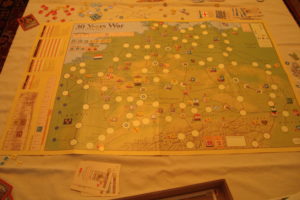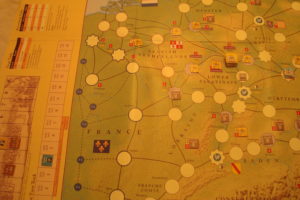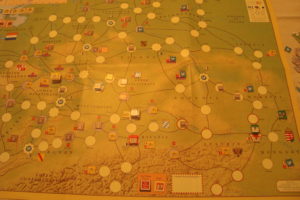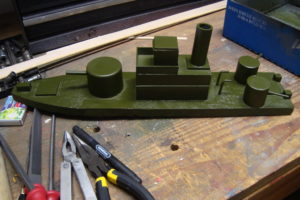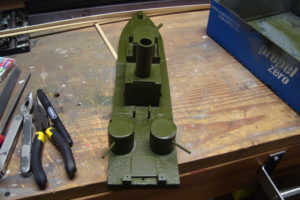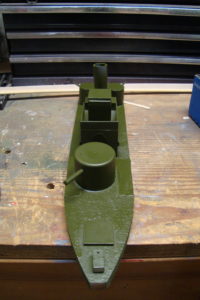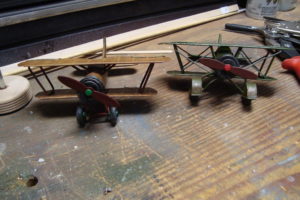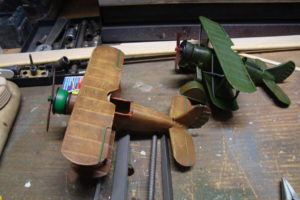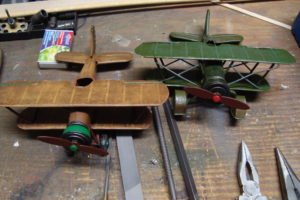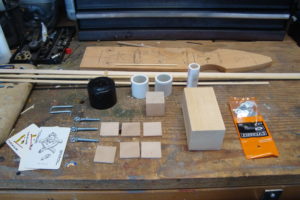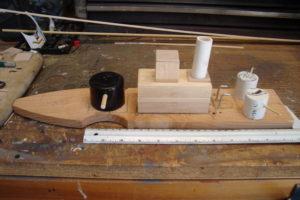Been messing around with Minden Games‘ Battle Over Britain (BoB) the last few days. This “Tactical Plane vs Plane Air Combat Game” is designed by Gary Grabner, who also owns Minden Games, and publishes both Panzerschreck and Panzer Digest.
I’ve always liked Gary’s games, and the BoB series is no exception. First published in Panzer Digest as Faith, Hope & Charity – Air Battles Over Malta, 1940-41, the series now includes Battle Over Britain, Flying Tigers and a Solitaire Module.
What attracted to me to the series is its use of a wide variety of early war aircraft. These include CR-42s, Gladiators, a Polish P-11c, a Dutch Fokker D.XX1, and a German HS-123.
As with many Minden Games, the action is generated by the use of a deck of playing cards. These cards are used to establish each aircraft’s altitude and firing position on a Dogfight Display. This display is a simple grid using card suit and value.
Each aircraft counter has a top-down view of the aircraft, along with its Speed, Agility, Fire Modifier, Performance, and Durability Ratings. Speed indicates the number of cards in the player’s hand, Agility determines how many new cards can be drawn if the player “Yanks The Stick”, Performance rating differentials allow players to disengage from combat, and Durability is the number of hits an aircraft can take before being destroyed.
He’s incorporated a lot of chrome in both the basic and optional rules. These include ammunition, rear fire, a tailing bonus, ace status, and bailing out. The latter can be used in a campaign game. Several ideas (which Gary refers to as “abstracted”) are included in the rules.
The components are basic, but get the job done. I can see using a small terrain map with the grid superimposed, along with Tumbling Dice 1/600 aircraft to create a nice visual effect.
Gary designed this as a “fast and furious” card game with high replayability. He achieved these goals. It’s a lot of fun!

